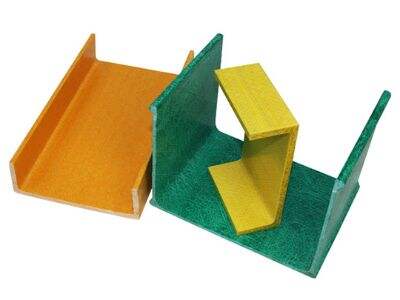Its fun to learn how things are madeIRL! How are it strong and tough fiberglass tubes made? They’re used in a range of products we interact with daily, from boats to sports equipment. Let's explore how they are created so we can understand the interesting process behind these high-quality tubes.
It involves a series of steps and processes ranging from raw materials to the finished product, which can influence everything from design choices to durability.
Fiberglass tubes: Manufacturers use fiberglass which is a reinforced composite material from making fiberglass tubes. Fiberglass consists of small and thin fibres that are woven together to form a strong and flexible structure. These special threads are generally made of glass, which is a material we find in windows and bottles. This process begins by melting the glass to its liquid state. This liquid glass is then spun into extremely fine filaments. The threads are woven together into large sheets of fiberglass. This material is the reason fiberglass tubes are firm and flexible, which make them ideal for a variety of applications.
Cured fibers are produced and then shaped into fiberglass tubes
Then its time to mold and shape the fiberglass material into tubes. The process begins with the use of a mold, a hollow shape into which the fiberglass will fit. Just like baking a cake in a cake pan! The fiberglass sheets are cut to shape and layered over the mold with precision. The mold is then heated and pressed shut. This heat helps melt the layers of fiberglass together and form them into tubes. This process must be undertaken with accuracy and care, which will ensure that the tubes are tough and resistant, adaptable to a myriad of applications.
How Quality Control Is Important When Producing Fiberglass Tubes
One of the most crucial steps after the manufacturing process of fiberglass tubing is quality assurance. When everything is done, there are also inspectors — people who carefully observe each tube to make sure that there are no defects, mistakes or problems. They check for anything that could cause the tube to be weak or not function correctly. Inspectors also check the strength and flexibility of the tubes. This is to ensure they can withstand different conditions, including use in warm or frigid temperatures. These manufacturers must go through stringent quality control steps to guarantee the reliability and extensive lifespan of their fiberglass tubes, being extremely important for end users.
Curing Fiberglass Tubes to Make Them Stronger
The tubes would then be cured to set the shape. Fiberglass tube forming involves a curing process which is a very important step. The tubes are subjected to heat and pressure in this process. It allows that fiberglass material to be tightly bound together, creating a solid structure. Curing makes tubes strong and long-lasting as well, meaning wear and tear over time doesn't build up. After curing, the tubes are completely ready for subsequent steps in the manufacturing process.
The little extras that put the final touches on fiberglass tubes
The final part of making tubes and fiberglass tubes are all the embellishments that make a tube look special! Some manufacturers will coat the tubes with a protective coating. This coating makes the tubes more durable for resistance against scratches and the elements. They may also include colors or fun designs to make the tubes appealing to customers. This gives the tubes not only an aesthetic form but also performance and durability.
Summary: fiberglass kite rods of suitable quality are produced following a number of steps, all of which require expertise and caution. By exploring these steps, we can gain an understanding of how the right materials, molding and shaping techniques, quality checks, curing, and finishing contribute to the creation of durable fiberglass tubes that are truly a labor of love. It is a satisfaction of CQDJ to generate high-quality fiberglass tubes that meet the criteria and requirements of our customers and to make sure that they get the best from the products.

